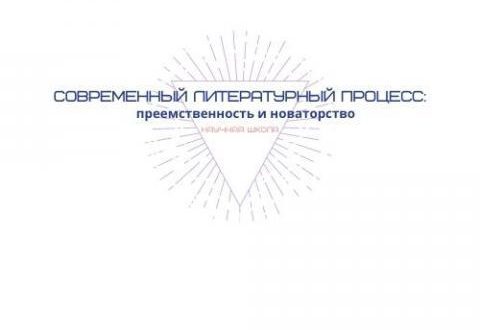12th edition of the Small Cinemas Conference «From Celluloid to Streaming: Conservation and Circulation of Small Cinemas» (Santiago de Compostela, October 28-29, 2021)
The flow of globalization has renewed the debate on centre-periphery inequalities. The irruption of new technologies for distributing, consuming and archiving cinema pose a challenge to small cinemas already fighting for a place in traditional screening venues and events. Small cinema products are now part of the Video on Demand gigantic catalogues. The so-called algorithm culture perpetuates the unbalance between big and small industries.
In this conference, we propose to analyse if the algorithm could be a death sentence for small cinemas or could instead bring new opportunities. Should small cinemas look for visibility by using tags related to popular genres or use smallness or periphery as tags themselves are relevant questions for the survival of small productions. Could small cinemas create a niche in the bag of Video on Demand (VoD)? Could they be independent from cinema venues or film festivals? Are there any existing dissemination models to follow? As online distribution redefines and makes peripheries visible rather than merge them with the centre (Szczepanik et al., 2020), the presence and success of small films could inspire new models of distribution, particularly as a result of Covid-19 conditions.
The conservation of small cinemas is also a relevant issue when films vanish into an increasingly saturated market. Access to films is indispensable for drawing a visual imaginary which is part of the nation as imagined community (Anderson, 1983). In the last years, some public or collaborative initiatives gathered films in minority languages, movies difficult to trace and endangered visual materials for posting on the Internet, where they are or can be transformed and appropriated by users.
Suggested topics:-The flow centre/periphery in post-globalization and small cinemas.
-Effectiveness of public policies for the circulation of small cinemas.
-Digital market regulations and their effect on small cinemas.
-Exceptions to the rule: successful cases of small cinemas circulation on the international market.
-The festival circuit and the positioning of small cinemas.
-Looking for a ‘natural’ audience of small cinemas.
-The impact of Video on Demand on small cinemas.
-Algorithms, audiences and small cinemas.
-The impact of Covid-19 on the circulation/dissemination of small cinemas.
-The preservation of small cinemas as part of the immaterial cultural heritage.
-Archives and small cinemas. Avoiding the invisibility of small and peripheral cultures.
Submission deadline: Please submit a 300-word proposal by April 30, 2021Conference Committee Response: June 30, 2021Upon acceptance of proposals, a short abstract and bio are due: July 15, 2021
Please submit your proposal through the form at the bottom of the page.
Contact: info@estudosaudiovisuais.org
Mode of participation: Blended model (On site + Streaming)
Conference fee: 50€ general / 25€ students, unemployed
Bibliography
Anderson, Benedict (1983). Imagined communities. Reflections on the origins and spread of nationalism. London: Verso.
Barreiro, M. S., Clares-Gavilán, J. (2020). “Public policies and strategies to foster access to films in a minority language. Catalonia and film subtitling 2015-2017”, International Journal of Public Policies, DOI: 10.1080/10286632.2020.1743698
Blankenship, J; Nagl, T. (eds.) (2015). European visions. Small cinemas in transition. Bielefeld: transcript.
Clares-Gavilán, J. (Coord.); Merino-Álvarez, C.; Neira, E. (2018). La revolución over the top: Del VOD a la televisión por Internet. Barcelona: Editorial UOC
Giukin, L.; Falkowska, J.; Desser, D. (eds.) (2015). Small cinemas in global markets. Genres, identities, narratives. Maryland: Lexington Books.
Hjort, M. (2016). “Crossing borders. Going transnational with ‘Danish’ film training, capacity building, and talent development” in A Companion to Nordic Cinema, M. Hjort, U. Lundqvist (eds.), pp. 148-172.
Hjort, M. (2005). Small nation, global cinema: the new Danish cinema. Minneapolis: University of Minnesota Press.
Hjort, M.; Petrie, D. (2007). The cinema of small nations. Edinburgh: Edinburgh University Press.
Ledo Andión, M. (2015). Finland, Galicia, Wales. The challenges of small cinemas in non hegemonic languages. Santiago de Compostela: Sacaúntos.
Ledo Andión, M; López Gómez, AM; Pérez Pereiro, M. (2016): “European cinema in the languages of stateless and small nations”. Revista Latina de Comunicación Social, 71, pp. 309 to 331. http://www.revistalatinacs.org/071/paper/1097/17en.html
Lobato, R (2012). Shadow economies of cinema. Mapping informal film distribution. London: BFI/Bloomsbury.
Lobato, R. (2009). “The politics of digital distribution: exclusionary structures in online cinema”,. Studies in Australasian Cinema, volume 3, issue 2, pp. 167-178.
López-Gómez, A.; Vallejo, A; Barreiro, M. A.; Alencar, A. (2020). “Found in Translation: Film Festivals, Documentary and the Preservation of Linguistic Diversity” in Documentary Film Festivals Vol.1, A. Vallejo, E. Winton (eds.), pp. 241-264.
Manias-Muñoz, M., Soliña-Barreiro, M., Rodríguez, A. I. (2017). “Public policies, diversity and national cinemas in the Spanish context: Catalonia, Basque Country and Galicia”, Communication & Society, Vol. 21-30, pp. 125-145.
Neira, E. (2013). El espectador social. Las redes sociales en la promoción cinematográfica. Barcelona: UOC.
Neira, E. (2015). La otra pantalla. Redes sociales, móviles y la nueva televisión. Barcelona: UOC.
Peirano, María Paz (2020). “Mapping histories and archiving epehemeral landscapes: strategies and challenges for researching small film festivals”, Studies in European Cinema, 17 (2), pp. 170-184.
Szczepanik, P., Zahrádka, P., Macek, J., Stepan, P. (Eds.) (2020). Digital peripheries. The online circulation of audiovisual content from the small market perspective. New York: Springer.
Szczepanik, P. (2017). “Localize or Die: Intermediaries in a Small East-Central European On-Demand Market”, Cinéma & Cie, vol. XVII, no. 29, pp. 33-49.




